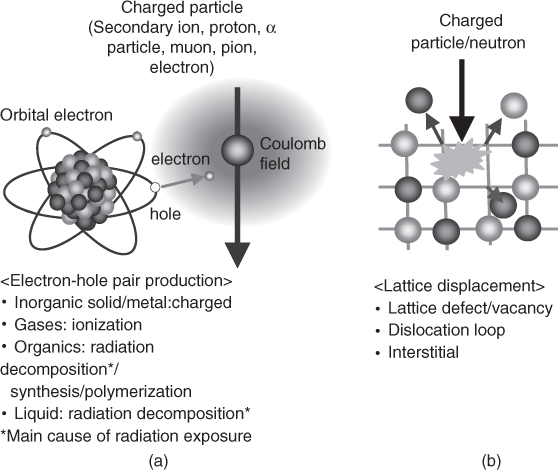Chapter 3Fundamentals of Radiation Effects
3.1 General Description of Radiation Effects
Figure 3.1a illustrates a simplified mechanism of one of the effects of radiation on matter. When a charged particle (secondary ion) passes close to an atom, some electrons are extracted by the Coulomb force of the secondary particle to produce electron-hole pairs. Such electron-hole pair production results in the charge-up of inorganic solid matters, ionization for gases, radiation decomposition/synthesis/polymerization for organic matter [1, 2] and radiation decomposition for liquid (water radiolysis in water [3]). The effects for organic matters and liquids are the main causes of radiation exposure of human tissues.

Figure 3.1 Fundamental mechanisms of radiation effects: (a) Coulomb interaction and (b) lattice displacement
Another radiation effect starts with the displacement of lattice atoms through the direct collision of particles including photons (very rare) [4] and neutrons [5] as illustrated in Figure 3.1b. Displacement of lattice atoms causes further defect/vacancy, dislocation loops and interstitials which results in changes in the properties of matters [6].
Since the present book focuses on the effects of radiation on ULSIs (Ultra Large Scale Intergration devices) and electronic systems, only the radiation effects on solids are discussed. Neither radiation effects of organics ...
Get Terrestrial Radiation Effects in ULSI Devices and Electronic Systems now with the O’Reilly learning platform.
O’Reilly members experience books, live events, courses curated by job role, and more from O’Reilly and nearly 200 top publishers.

